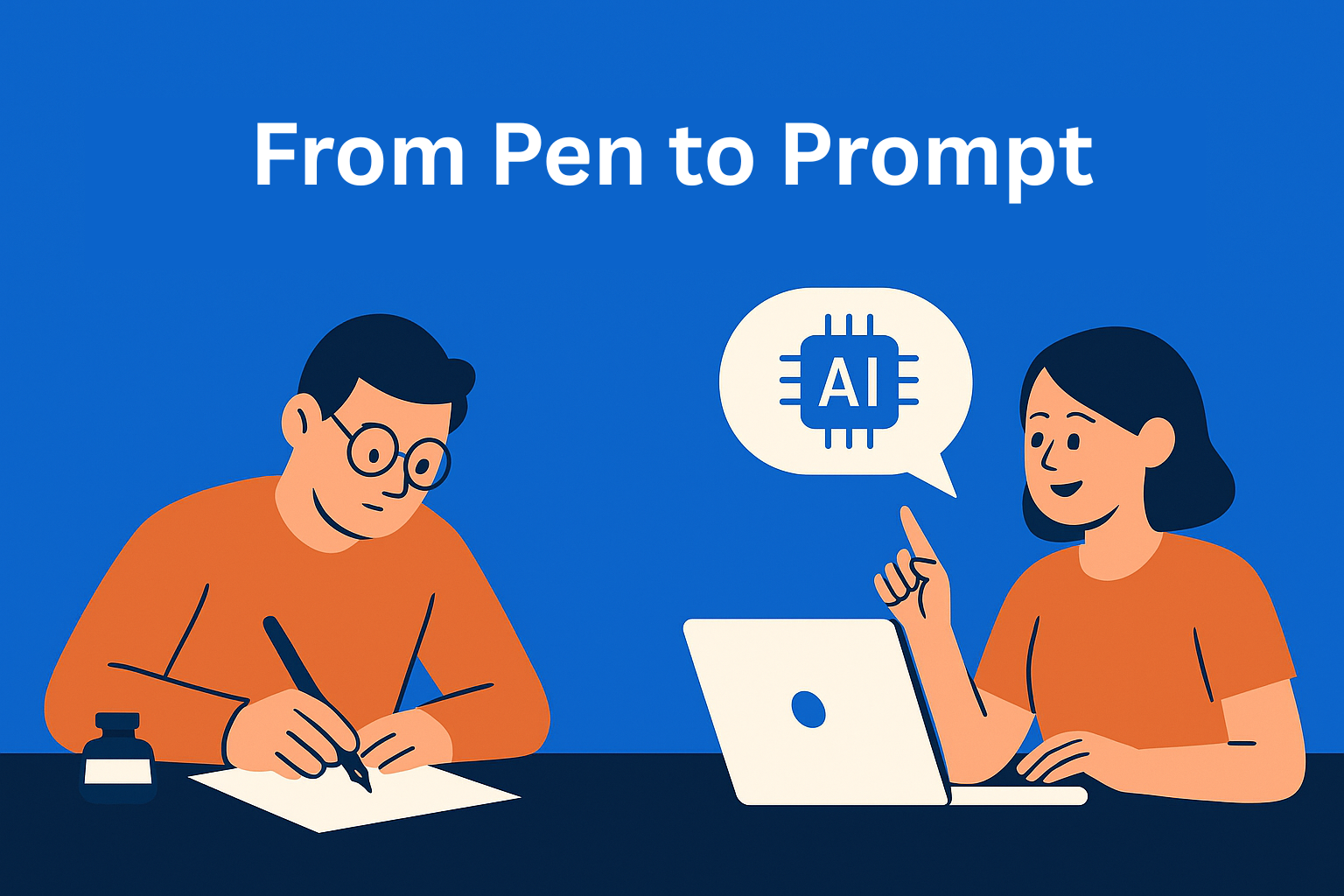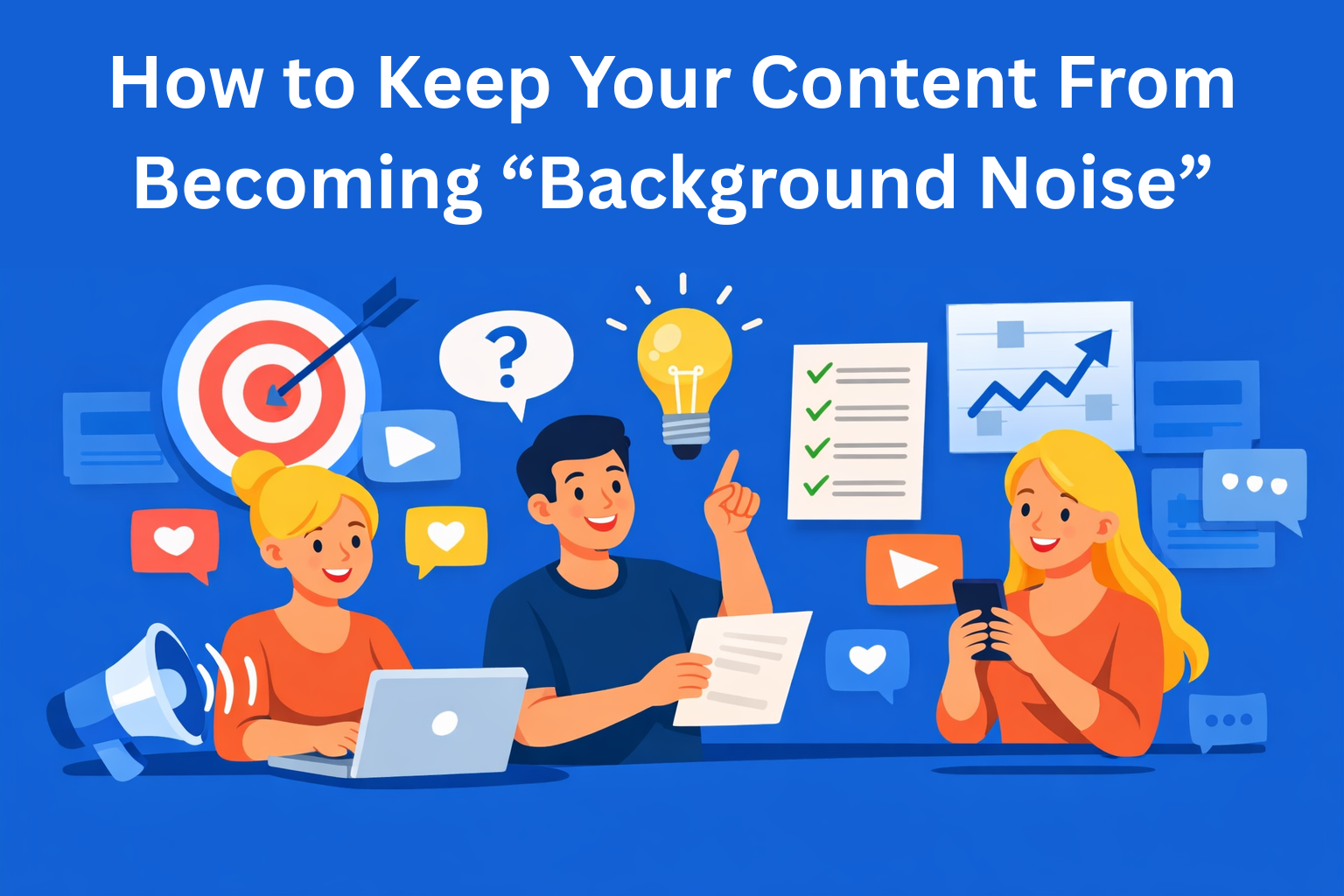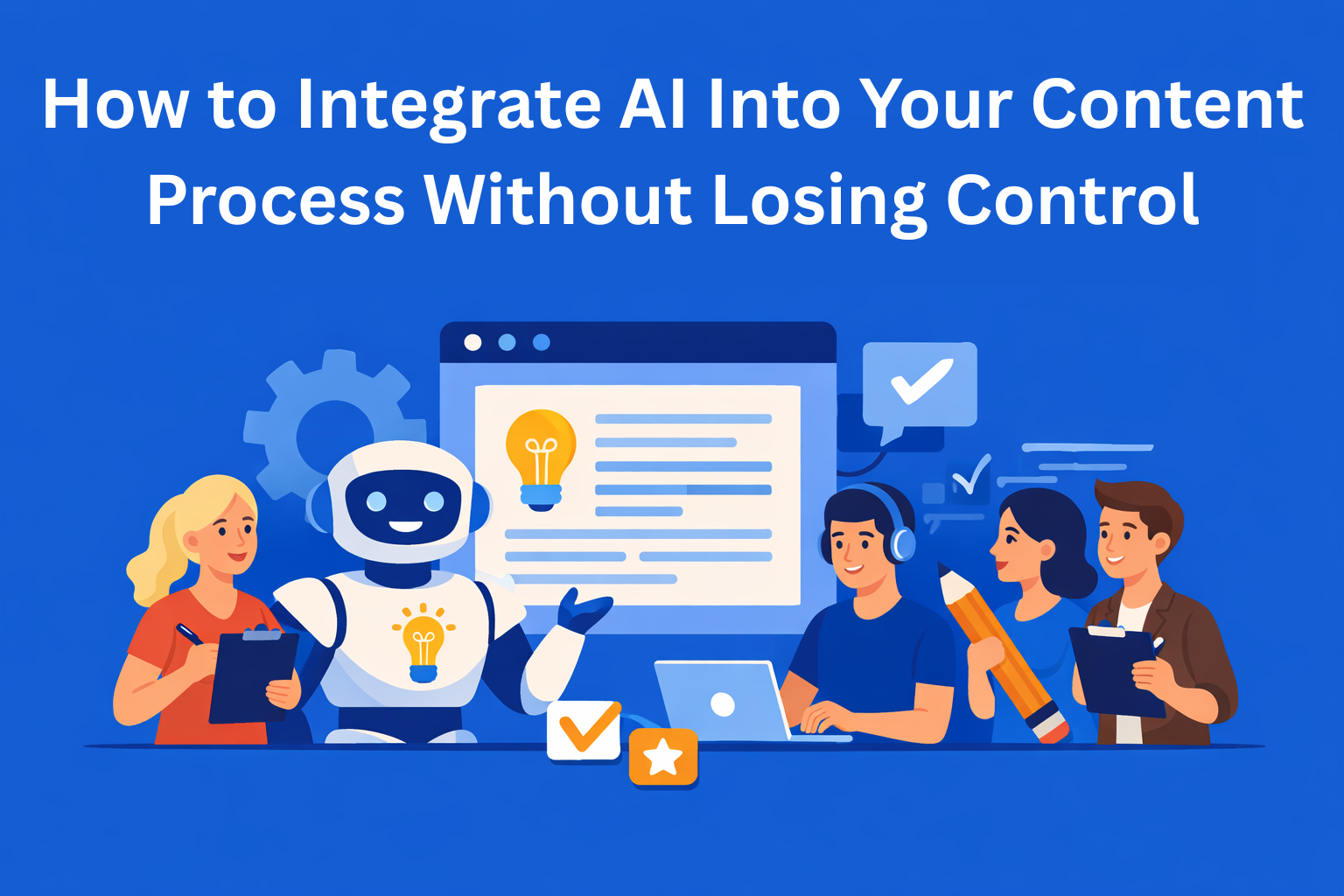From Pen to Prompt: The Evolution of the Writer in the AI Era
From candlelit desks to glowing screens, the writer’s craft has evolved - but the heart of storytelling remains. In the AI era, mastering prompts is as vital as mastering prose, blending human creativity with machine power to shape the future of writing.

Imagine a writer from the 18th century. Sitting at an old wooden desk, in a room lit only by the flickering light of a candle. In his hand, a quill dipped carefully into ink, slowly writing line by line on paper. Every word is deliberate, carrying its own weight, and every stroke of the pen holds a piece of his personal story and emotions. Now, let’s jump ahead a few hundred years - we’re in the era of keyboards, glowing screens, and artificial intelligence. The tools are completely different, but the essence remains the same: to transfer a thought, feeling, or story from the mind onto a medium.
Key Takeaways
- The essence of writing hasn’t changed - the tools evolved from quills to keyboards to AI, but storytelling remains at the core.
- AI shifts the writer’s role from creator to conductor - guiding the tone, structure, and vision while AI assists with execution.
- Crafting precise prompts is a core modern writing skill - clarity and detail determine the quality of AI-generated text.
- AI enhances rather than replaces creativity - serving as a source of inspiration, new perspectives, and style experimentation.
- The future belongs to “Writer 2.0” - those who merge imagination with prompt mastery will define the next era of storytelling.
The Era of Pen and Paper
Writing used to be a calm, almost ritual-like process, not a race against time. You’d sit at a table, with paper or a notebook in front of you, a pencil or pen in hand, surrounded by silence that helps you focus. Every word was chosen carefully, because once written in ink, it couldn’t be erased. Writers didn’t have Google, AI, or any digital tools - a story had to be born solely from imagination and life experience. That physical connection with the text (the feel of the paper under your fingers, the sound of the pen gliding) brought a special kind of energy and depth to every written word.
The Digital Transition
When the first computers arrived, the entire writing process became much faster. Suddenly, mistakes no longer meant crossing out or rewriting entire pages – just pressing a single key could erase them. Ideas could be changed and adjusted on the go, and writers had the freedom to try out new sentences and structures without fear of wasting time (and resources) or ruining the text. Despite this speed and new possibilities, the core remained the same - it was still the writer who chose the words, shaped the story, and gave meaning to everything written.
The Arrival of AI in the Creative Process
And then came AI. Suddenly, the writer was no longer the only one creating text - now there was a digital assistant at their side, capable of suggesting a sentence, writing an introduction, researching a topic, or even producing an entire story from start to finish. Artificial intelligence can offer inspiration when ideas run dry, present new perspectives on the same topic, and even “fill in the gaps” where the author gets stuck. In this environment, the writer in the AI era is not just a creator who shapes every word, but also a conductor - someone who guides and directs the tool, giving it rhythm and tone so the final result matches the vision.
From Pen to Prompt: The Writer’s New Skill
In this new reality, a writer’s skill is measured not only by imagination or writing style, but also by their ability to clearly and precisely craft a good prompt. A prompt is essentially a set of instructions given to the AI, and the quality of those instructions directly determines the result. If it’s vague or too general, the AI will return a bland, generic text. But if it’s precise, clear, and rich in detail, it can draw out original, creative content that feels unique. Creativity is still at the heart of it all, but now it also requires technical precision in turning an idea into clear instructions.
Creativity in Symbiosis with the Machine
Many believe AI is slowly killing human creativity, but that’s not true. In reality, the opposite is happening - AI can awaken and enhance it. A writer can use it as a source of ideas when inspiration runs low, as a partner that encourages thinking in broader terms, exploring topics in new ways, and trying out different structures and styles. The line between what’s created by the human and what’s generated by the tool is becoming thinner, but it’s in this overlap that a new form of art emerges - the symbiosis of human and machine.
The Future of Writing
No one can say for certain what writing will look like in the future, but judging by how things are now, it’s very likely that a large portion of written content will be created with the help of AI, while humans will guide the direction, tone, main messages, and key ideas. This means AI could handle the technical side of producing text, while people keep the creative and strategic role. At the same time, readers may still want to see an authentic human touch - warmth, personal style, and emotion. Most likely, these two approaches will exist together and complement each other. What’s certain is that those who can combine imagination with the skill of writing great prompts will stand out as the writers of a new generation.
Conclusion: Writer 2.0
From pen to prompt, from ink to algorithm - the writer’s journey is truly fascinating and full of change. Technology changes the speed at which we work and the tools we use, but not the most important thing: our innate need to tell a story. Once, we would spend hours searching for the perfect word to fit into a sentence on paper. Today, we think about how to craft the best possible prompt for AI so it understands our idea and turns it into text. The pen was once the writer’s most powerful weapon, but today, the prompt can be even more powerful - if it’s in the hands of someone who knows how to use it with imagination and skill.






